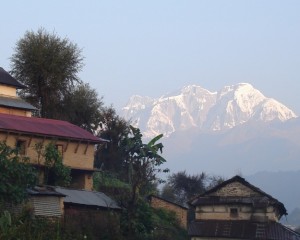How hard is Pikey Peak?
You want to experience the remote region of Nepal with challenging trekking and rewarding vistas. So which one is it? Pikey peak trek should be your destination. But is it easy to do?
Though not as famous as some other trails, Pikey Peak offers a special experience for adventurers seeking both natural beauty and a challenge. Along this path, you'll immerse in pristine landscapes, surrounded by towering peaks, and welcome by the kindness of local Sherpas.
How about its difficulty? Stay with us till the end to learn all about the Pikey Peak base camp to help you start the next trip.
Overview of Pikey Peak Trek
The Pikey Peak Trek typically covers a distance of approximately 40-50 kilometres (25-31 miles) round trip. The duration of the trek usually ranges from 6 to 8 days, including both trekking and acclimatization days.
The trek to Pikey Peak begins from the village of Jiri or Phaplu, both accessible by road from Kathmandu. From Jiri, trekkers follow a trail that winds its way through lush forests, charming Sherpa villages, and terraced farmland.
Along the way, you'll pass through beautiful settlements like Junbesi, Ringmo, and Ngaur, which offer cultural insights and warm hospitality.
As you ascend towards Pikey Peak, the landscape transforms into rugged terrain, taking towards the summit push to Pikey Peak itself. The route offers breathtaking views of the Himalayan range, including Mount Everest, Numbur, and Gauri Shankar.

How difficult is Pikey Peak Trek?
The altitude profile of the Pikey Peak Trek varies throughout the journey, with trekkers gradually gaining elevation as they progress towards the peak. The trek starts at an altitude of around 1,800 meters (5,900 feet) and reaches its highest point at Pikey Peak, which stands at approximately 4,065 meters (13,337 feet) above sea level.
Along the way, trekkers will encounter varying altitudes, with overnight stops at elevations ranging from 2,500 to 3,700 meters (8,200 to 12,100 feet). It allows for proper acclimatization before attempting the summit push.
The Pikey Peak Trek is moderately challenging, mainly due to its high-altitude terrain and the need for sustained physical effort. Along with the altitude, it brings the effects of altitude, like less oxygen and the risk of altitude sickness.
The trail varies from steep climbs to rocky paths and forests and requires both physical stamina and mental toughness.
But the reward? Unmatched views of Himalayan giants like Mount Everest, Makalu, and Kanchenjunga make every tough step totally worth it.
Best Time to Visit Pikey Peak Trek
The best time to visit Pikey Peak for trekking adventures is during Nepal's spring and autumn seasons. From March to May, spring brings mild, stable weather with clear skies and comfortable temperatures. The landscape covers different colours of blooming rhododendrons and wildflowers. Plus, the visibility is excellent during spring, as are the majestic views of the Himalayan peaks.
Similarly, from September to November, autumn gives Pikey Peak its charm. During this season, the weather remains dry and pleasant, with clear skies and cool, crisp air. It's the perfect time to trek, as the mountain views are breathtakingly clear against the skies. These months are celebrated for their stunning scenery. Every step of your trek is a feast for the eyes.
Both spring and autumn provide ideal conditions for trekking, with mild temperatures, minimal rainfall, and exceptional visibility. However, remember that mountain weather can be unpredictable, so it's essential to stay prepared for sudden changes. But if you're looking for the most comfortable weather and the most spectacular views, spring and autumn are your best bets for an unforgettable Pikey Peak adventure.
How do you prepare for the PIkey Peak Trek?
Despite the high altitude, the rewards are magnificent. So, how can you begin your trekking journey as a beginner or even an experienced trekker?
- Get in Shape: Regularly exercise with activities like walking, jogging, or cycling to build stamina and strength.
- Take It Slow: Gradually get used to higher altitudes by spending time at higher elevations during practice hikes and rest stops on the trek.
- Practice Walking: Train on different terrains and weather conditions to feel comfortable navigating rough trails during the trek.
- Gear Up: To stay comfortable, invest in good-quality trekking gear, such as sturdy boots, waterproof clothing, and a warm sleeping bag.
- Eat and Drink Well: Keep yourself fueled with a balanced diet and drink plenty of water to stay hydrated and energized.
To wrap up, As you deal with the challenges of the PIkey Peak trek, remember that every difficulty is an opportunity for growth and adventure. While the journey may test your physical endurance and mental resilience, the rewards that await atop Pikey Peak are beyond measure. Each step taken brings you closer to an experience that will stay with you long after the trek is over.
So, embrace the challenge, prepare diligently, and set forth with courage, knowing that the summit of Pikey Peak awaits those who dare to conquer its heights with Nepal Vision Treks.
FAQS






